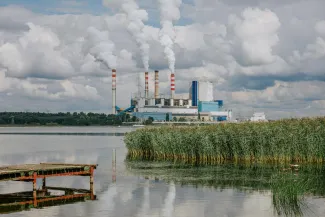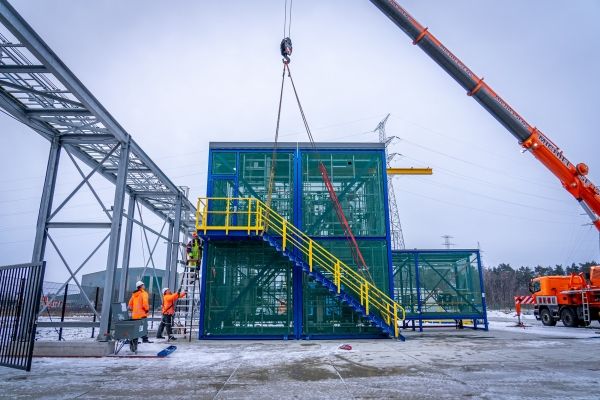
Carbon capture, use and storage
There is too much CO2 in the air, which is harmful in terms of global warming. Extracting CO2 from the air and storing it is one way of resolving this, but we can also extract CO2 from industrial emissions and use it to produce renewable fuels or high-quality chemicals or store it in, for example, building materials. Which solution fits your CO2 streams best?
Guiding organisations from strategy to implementation
Reducing CO2 emissions is an important element of environmental and sustainability strategies for many companies. However, there is no “one size fits all” strategy. Based on techno-economic analysis, VITO helps organisations of all sizes to identify and implement the solutions that best fit their carbon streams, budgets and ambitions.
How to capture CO2 in a cheaper and more effective way?
There are multiple methods to capture CO2 but in most cases they are not cost effective. That is why we are looking into developing solid sorbents that efficiently capture CO2 in packed bed configurations. Several shaping methods such as granulation, coating and extrusion are developed at Vito.
What are the benefits?
- Capture more CO2 with less sorbent material: The chemistry and structure of the sorbent materials is carefully selected to catch selectively large amounts of CO2.
- Efficient regeneration: Sorbents are designed to allow efficient regeneration of the captured CO2 through fast heating for instance using renewable electric energy.
- Decreased energy needs: The architecture or shape of the sorbents is modified to reduce the energy needed to push large amounts of air or flue gas through the packed bed.
Shaping technologies to make sorbents suitable for large scale use
How it works
Air or flue gas is flowing through the filter filled with shaped sorbent materials. The CO2 is trapped by the sorbent in the filter. Purified air or gas is released.
Only a small layer on the outside of the sorbent material will easily take up CO2. This means that a filter with large particles will only capture a small amount of CO2. A filter with small particles will take up more CO2. Smaller particles pack more densely and require more energy to push the air or flue gas through the filter resulting in a higher electricity consumption.
The solution
By controlling the porous architecture of the CO2 sorbent and introducing many pores the air flows easily through the structure and the CO2 uptake can be optimized. This way we need less sorbent material to capture more CO2.
What to do with CO2?
You can capture and store away CO2 in the underground but you can also use it to produce economically valuable products:
- building materials with a low or carbon negative footprint using carbonation
- non-fossil fuel by having CO2 react with hydrogen in a controlled manner or directly via CO2 electrolysis in aqueous environment
- chemicals or their intermediates, such as an alternative to ethanol, methanol, syngas, ethylene, …
- polymers and plastics
We already have CO2-based products that fit perfectly into the existing market. Products where the consumer contributes to the fight against climate change, simply by using them.
An example: first carbon negative footpath in Ghent
In Ghent you can walk on the first carbon negative footpath. The foothpath in the Leeuwstraat is constructed using Carbstone paving stones.
Carbstone paving stones are created by allowing steel slag, a residual product from the steel industry, to react with CO2 to create a range of products with the same technical properties as conventional concrete products. As this method doesn’t use cement but CO2 as a reactive binder, this drastically lowers the environmental impact of building materials.

Looking to turn your CO2-streams into a useful asset?
Contact Metin and find out which strategy fits your company best.



